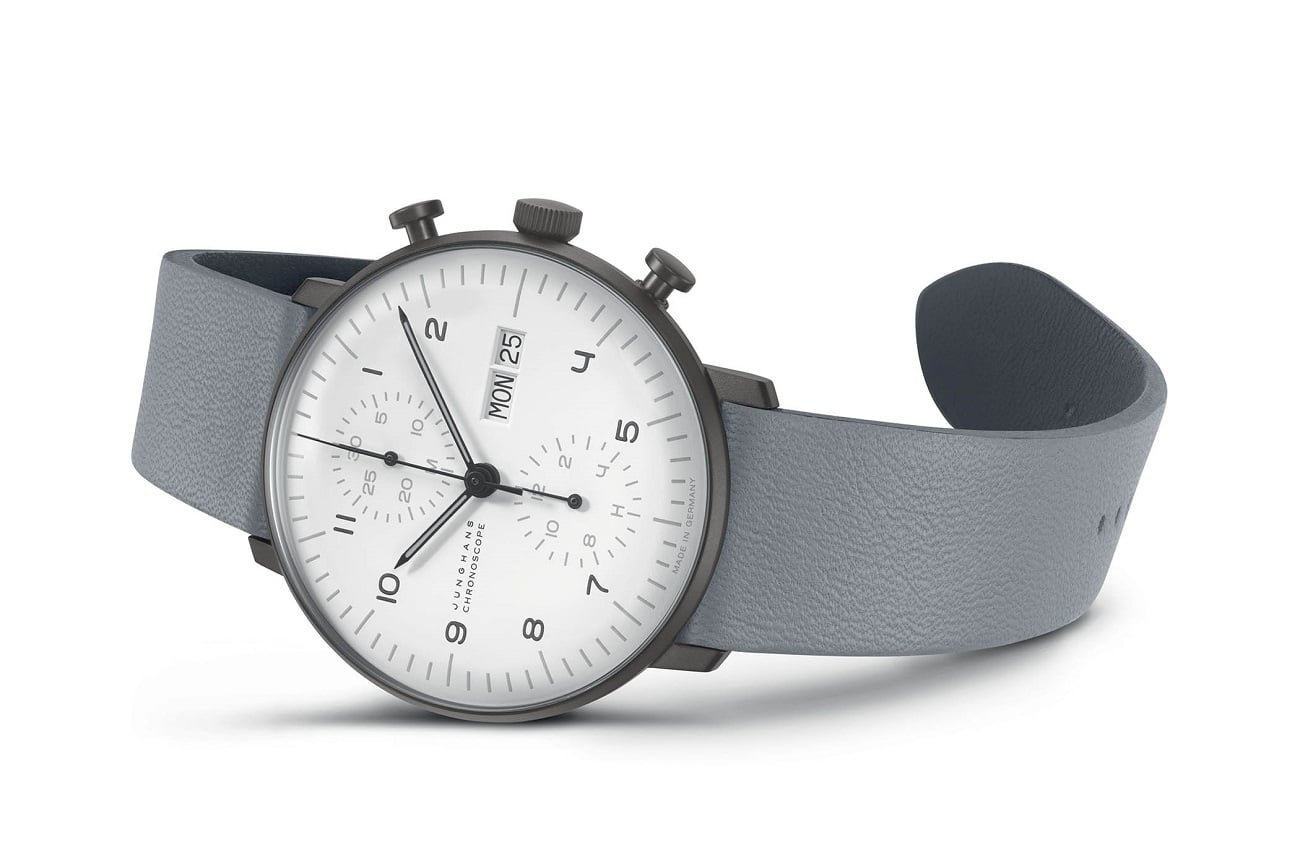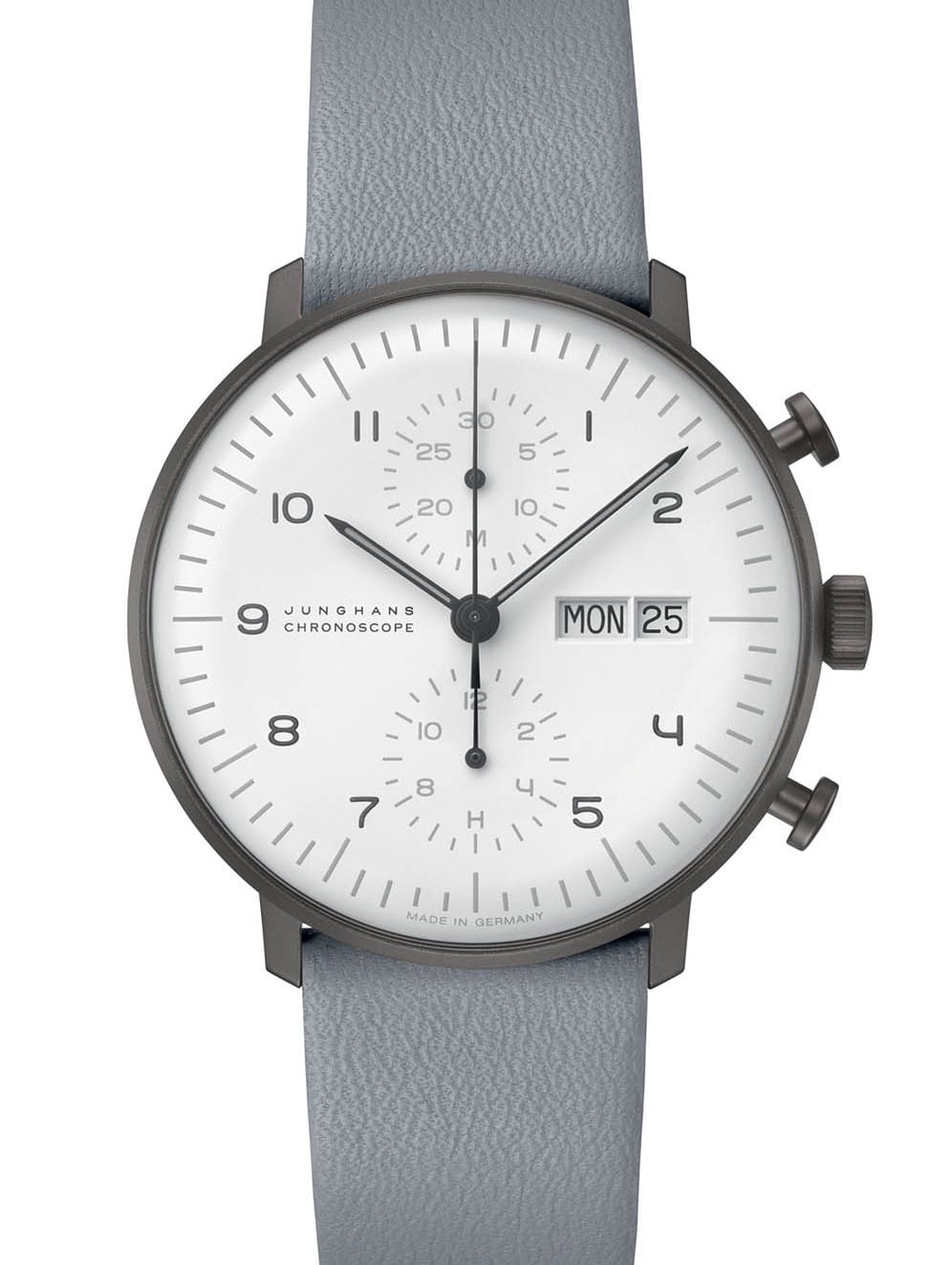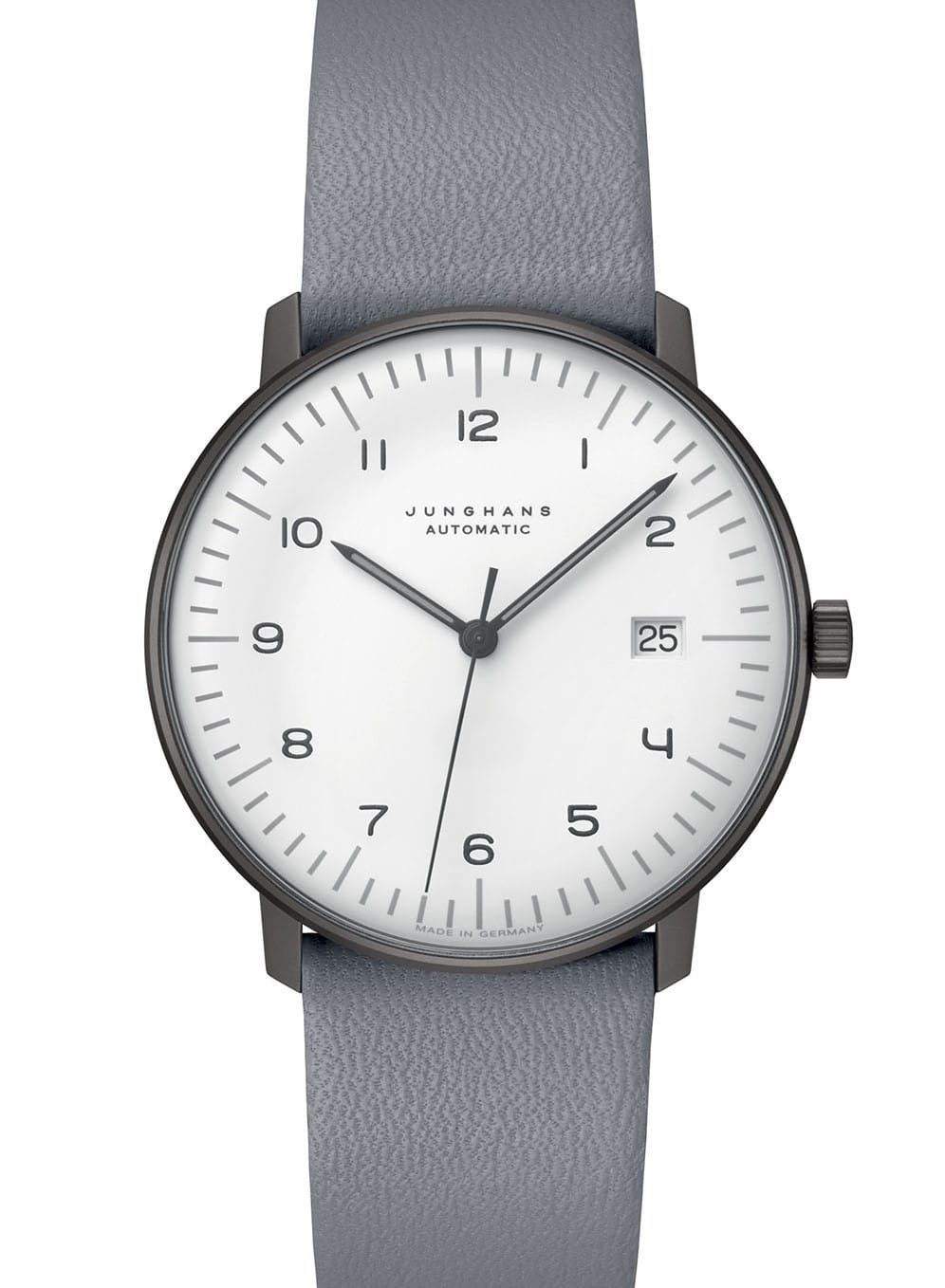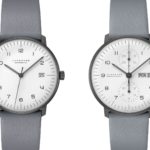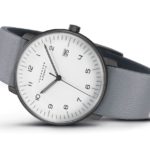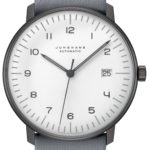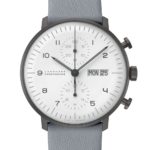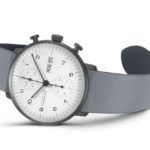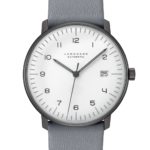There seem to be two aesthetic groupings that many German watches can be organized into. The first has to do with practicality, function over form. In this first group, perhaps most notably, are flieger watches (German for “flyer”) which were made for pilots. These watches were about, first and foremost, legibility. Many of them came in extremely large sizes by today’s standards, upwards of 50mm (Imagine how gigantic they were in the 1930’s and 40’s!). Like other military watches, fliegers had mostly sterile dials and, since their main function was accurate timekeeping, large and clear Arabic numeral save for the occasional triangle marker at twelve. Not only are brands with military history (like Stowa, Sinn, and Laco) still making fliegers in this style (albeit a bit smaller), but newer, independent German brands have taken the simplistic, legible, and functional design cues from these original military watches and put their own modern spin on them (Damasko and Archimede for example).
The other group is focused more on form. Perhaps that’s not correct. Let’s say that this second group is form-forward, meaning that these watches have a certain design flair that goes beyond function though many of these timepieces also have high-functioning and well-crafted movements (though the movements, also, are showpieces unto themselves and quite form-forward). Here, you may think of brands such as A. Lange & Söhne, Nomos, and Glashütte Original. Watches from these brands range from simplistically-styled, time only models to asymmetrical, almost abstract pieces with rare and expensive complications.
Junghans, founded in 1861, occupies an interesting niche in the realm of German-manufactured timepieces because they make watches that could fit comfortably into either of the aforementioned aesthetic groups. To delve into an even more specific niche, one only needs look at their Max Bill line. The Junghans Max Bill watches are the best of both worlds: high-function and practicality and well-thought-out though creative design. Designed by Swiss architect Max Bill, a student of the Bauhaus school (and such modern makers as Wassily Kandinsky and Paul Klee), these watches are distinctively modern and, though a hybrid of two recognizable design styles, distinctively German. The Junghans Max Bill watches are likely familiar to fans of German watchmaking, modernist architecture, industrial design, and modern art. I don’t know if there is another German watch brand whose design cues may be recognizable to so many people outside the Watch Fam.
Continuing on with their line of watches inspired by minimalist modern Bauhaus style, Junghans has just released new versions of their automatic Max Bill watch and their lovely Max Bill Chronoscope. Folks familiar with these pieces will be pleased to find most of their design aesthetics intact: Max Bill-created font (particularly that endlessly satisfying “4), minimal, uncluttered dial, and sleek modern case profile. What makes these watches what they are is this visually appealing blend of form and function. This is the definition of modernism, something that expresses an artistic point of view, but which is made for consumption and must function at a high level. This was a leading design principle of Walter Gropius, the founder of the Bauhaus school, that architecture (and design for that matter) could be both visually appealing and practical.
The current iteration of the Max Bill automatic and Max Bill Chronoscope share much of the same DNA as previous versions, though these new releases pay even more tribute to Bill, the Bauhaus school, and architecture as a whole. Taking a cue from Junghans’ previous Max Bill release to celebrate 100 years of the watch, the new offerings all have substituted the traditional stainless steel case for one that is coated with an anthracite-colored PVD. Combined with an anthracite-gray calf leather strap, the case communicates a clear nod to the foundation (no pun intended) of so much Bauhaus architecture, concrete. Continuing on with this theme, the dial itself honors building in all its glory with a matte white dial with black and gray hands, font, and indices. If previous versions of the Max Bill told us, subtly, the story of German modernist architecture, the newest Max Bills are screaming it from the highly-designed, though restrained, rooftops.
The new releases include three watches, both 38mm and 34mm Max Bill automatics (powered by a Sellita SW-300 movement) and a 40mm Max Bill Chronoscope (powered by a Calibre J880.2/Sellita SW-500 movement). Fans of Bauhaus in specific, German design sensibility in general, and modern art overall will undoubtedly be drawn to Junghans’ newest iterations of the Max Bill.
Automatic:
- Dimensions: 38mm (ref. 027/4007.04) or 34mm diameter (ref. 027/4006.04) x 10mm height
- Case: Stainless steel case with matte anthracite PVD coating ; screwed caseback
- Dial: Matte white dial with black and gray inscriptions and indices
- Strap: Gray calf leather strap with PVD-coated buckle
- Water Resistance: 30m )
- Movement: Sellita SW-300 (inspired by the ETA 2824) automatic movement with 42h power reserve for hours, minutes, seconds, and date
- Price: EUR 1,095 / USD approx. $1,207 (38mm version) ; EUR 995 / USD approx.. $1,097 (34mm version)
Chronoscope:
- Dimensions: 40mm x 14.4mm height (ref. 427/4008.04)
- Case: Stainless steel case with matte anthracite PVD coating ; screwed caseback
- Dial: Matte white dial with black and gray inscriptions and indices
- Strap: Gray calf leather strap with PVD-coated buckle
- Water Resistance: 30m
- Movement: Calibre J880.2, an automatic Sellita SW-500 (inspired by the Valjoux 7750) with 48h power reserve for hours, minutes, seconds, day/date, and chronograph
- Price: EUR 1,895 / USD approx. $2,089
Learn more on the official Junghans website.

Henry is a scholarly watch nerd based out of northern New Jersey. He works as a professor of composition and creative writing by day and a fiction writer by night. Both his academic and creative work have given him insight on design and rhetoric and his fiction writing background influences his humorous, narrative take on watch reviews. His watch collecting habits tend to lean toward vintage, but he never shies away from unique and interesting new pieces. Henry is also an avid musician, record collector, whiskey aficionado, serial hobbyist, and all-around enthusiast.

